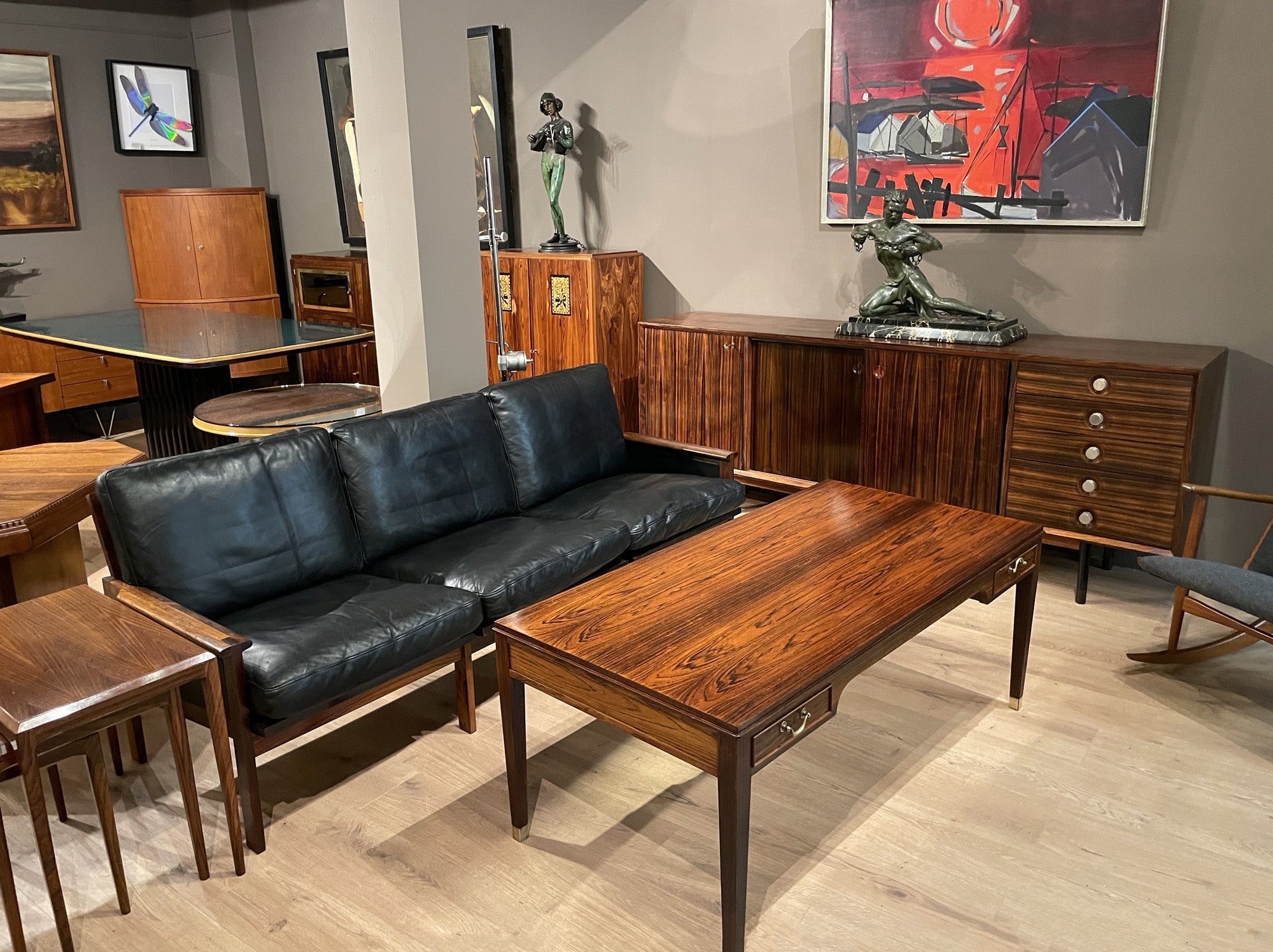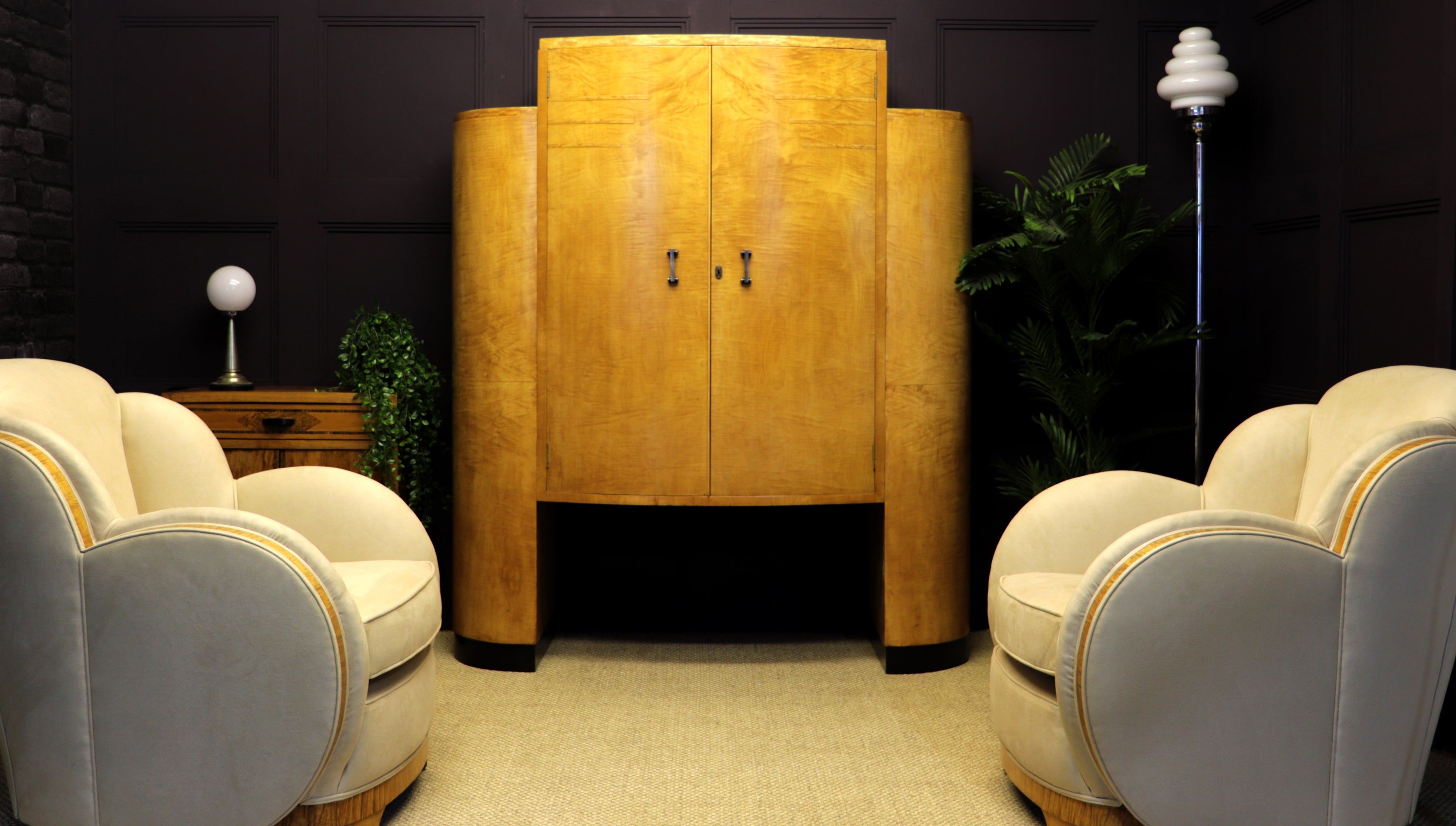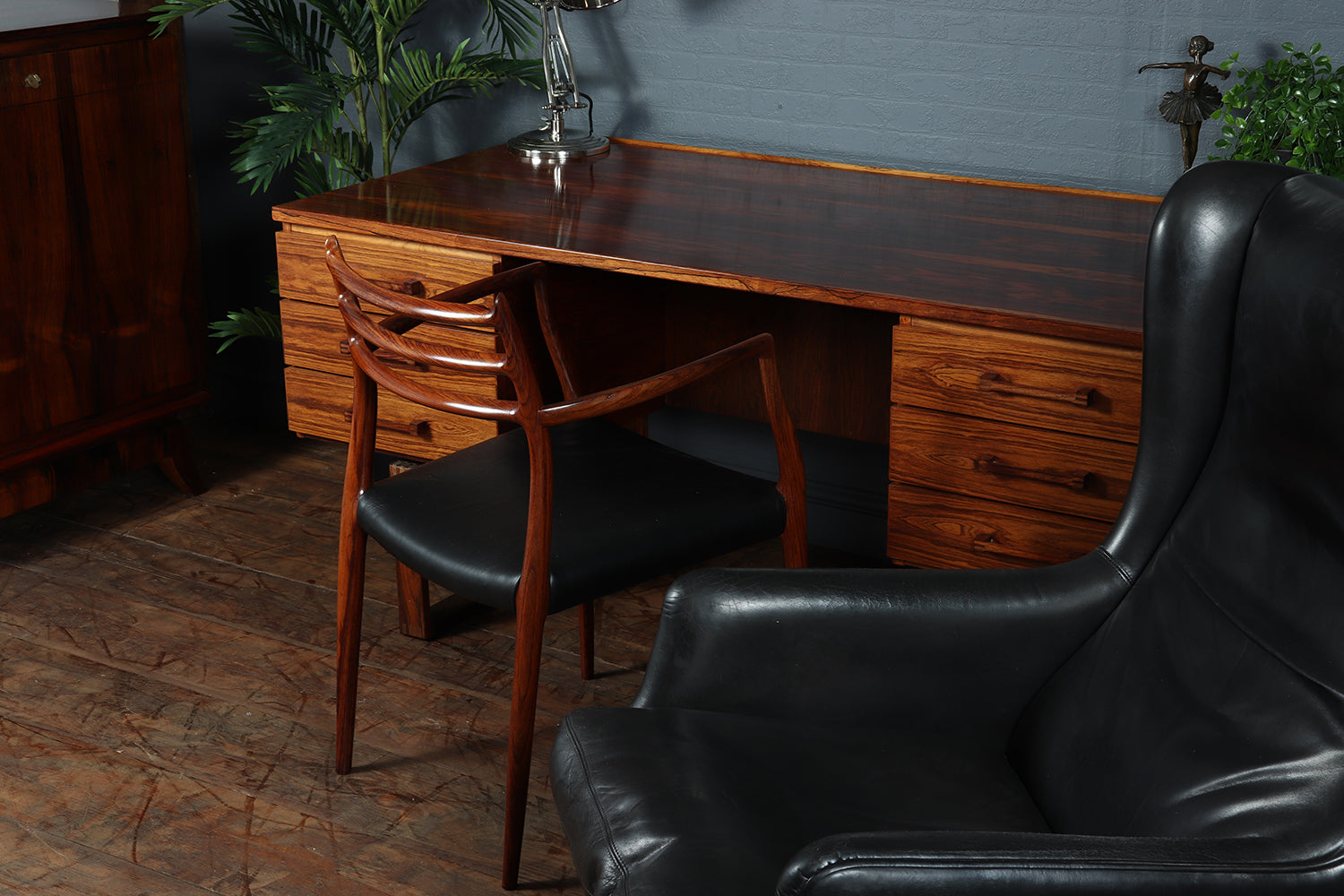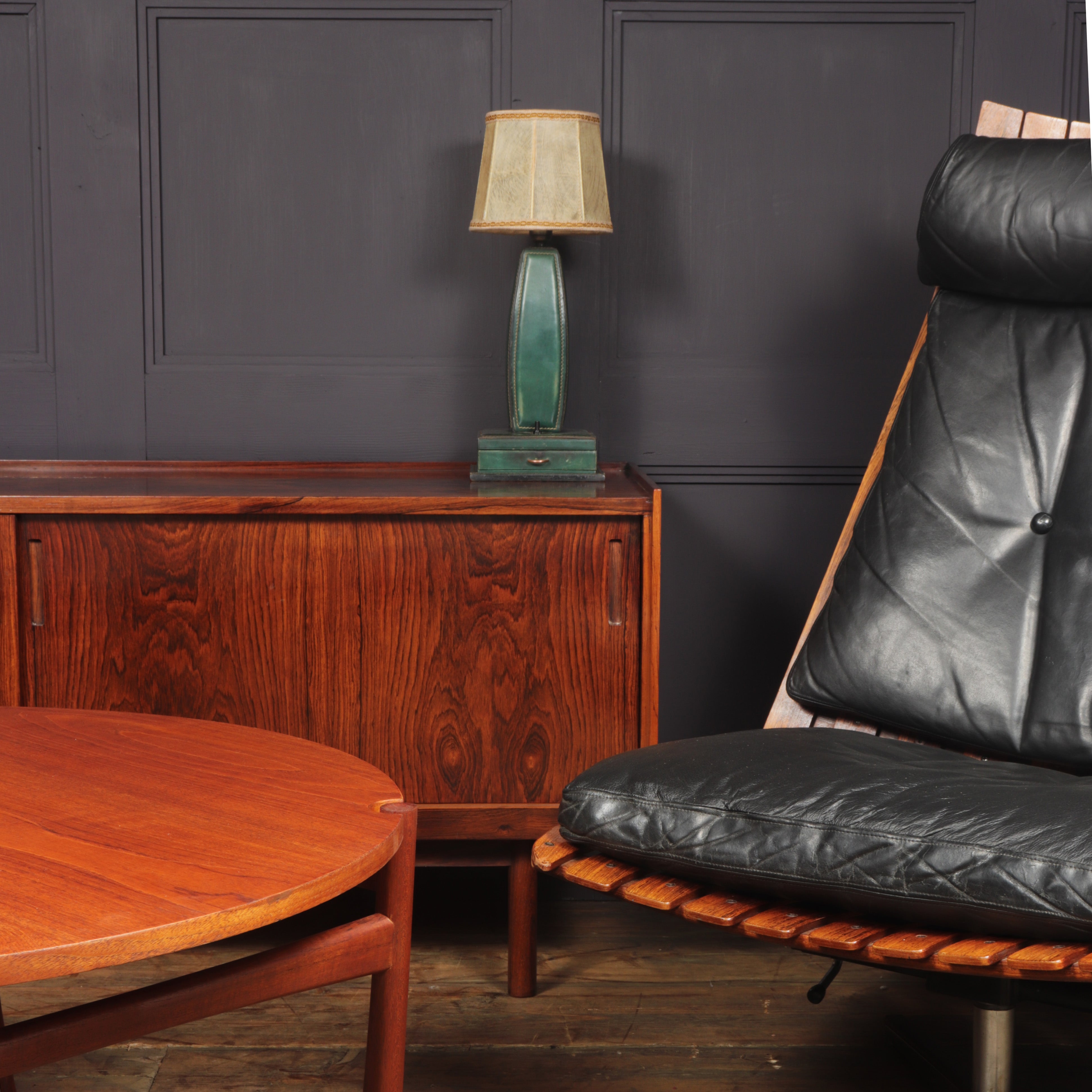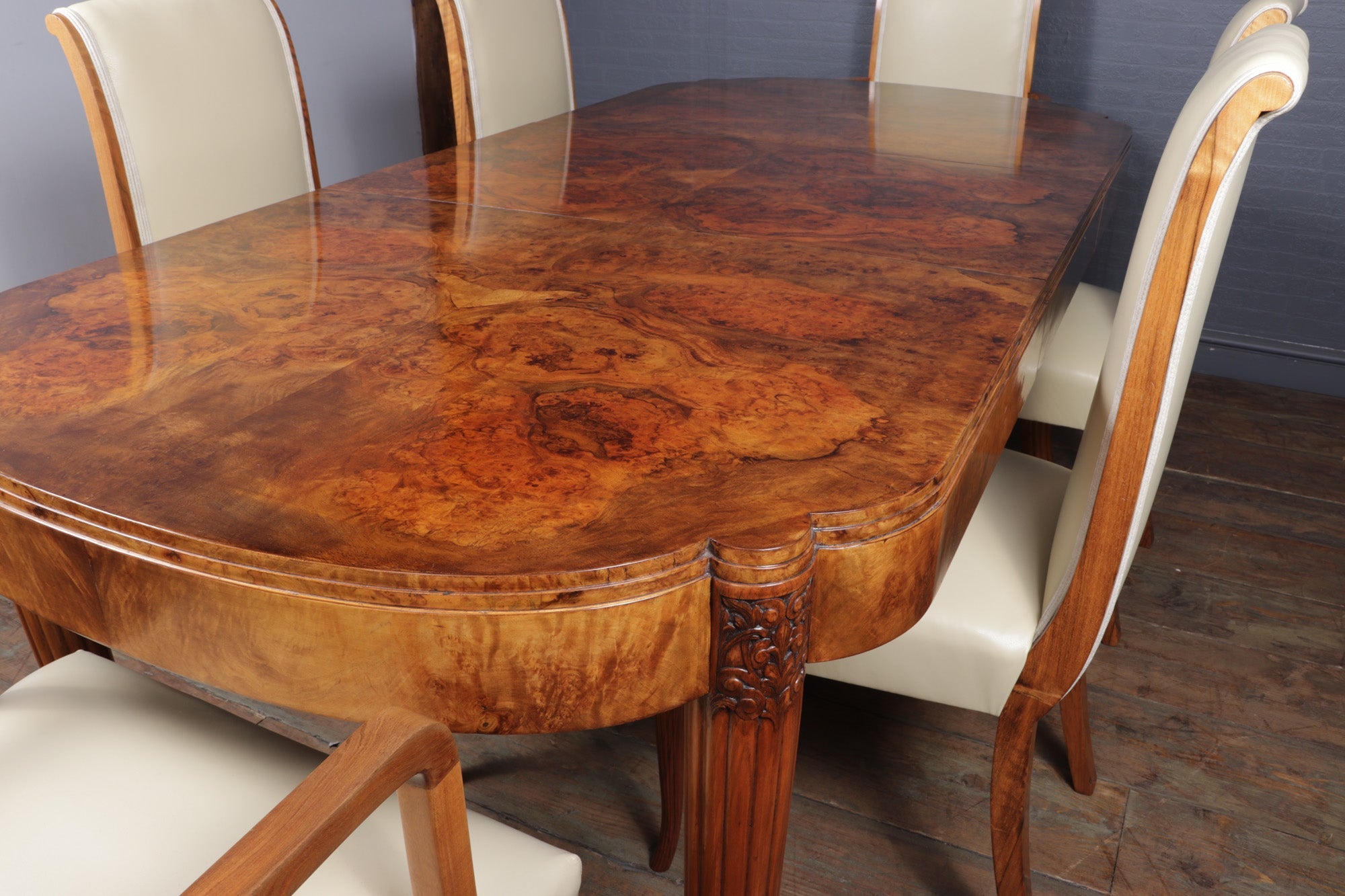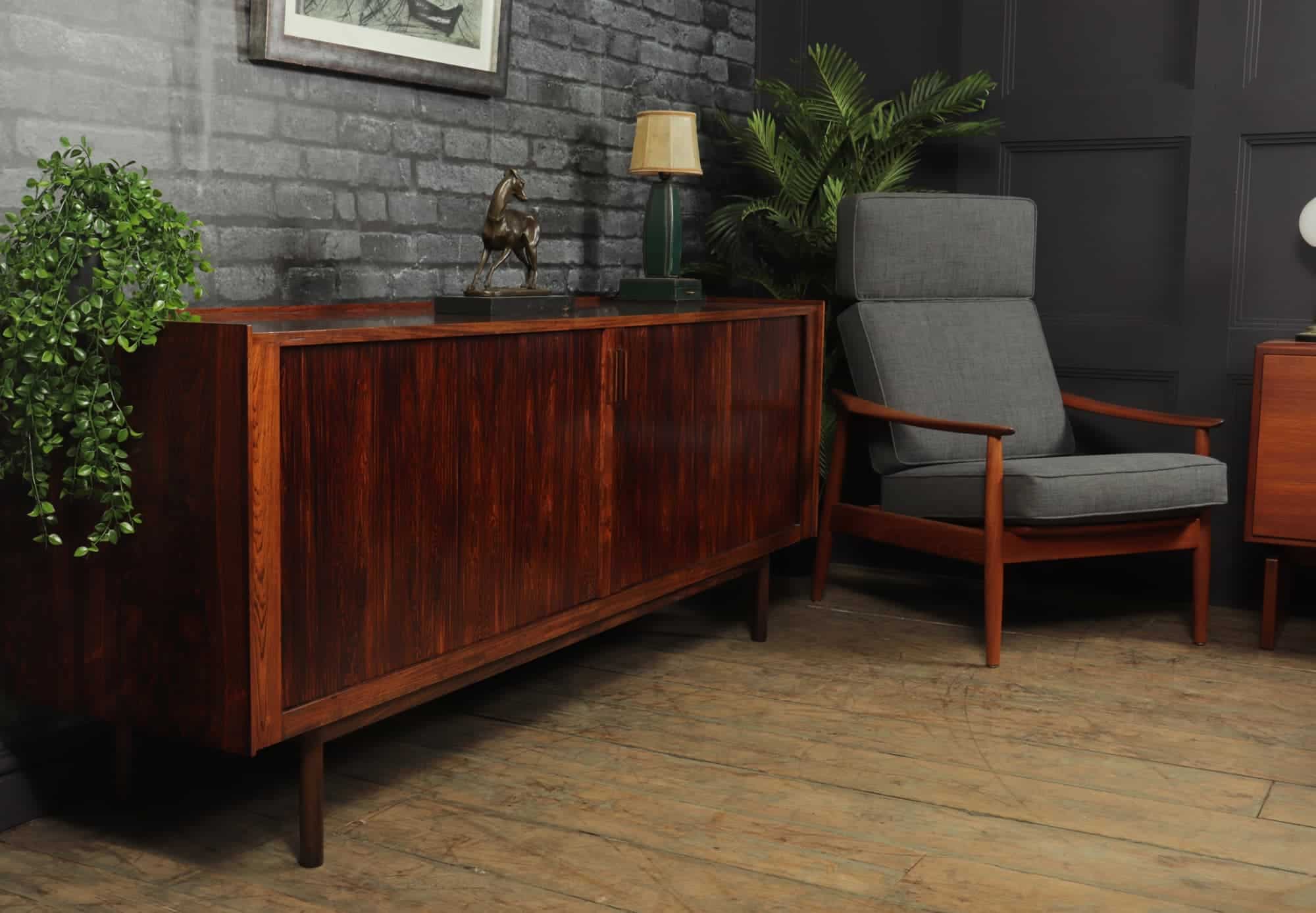Discover the Pioneers of Danish Mid Century Modernism
Danish Mid Century Modern Design
Danish mid century modern design is a movement that flourished from 1945 to 1975 and has since become one of the most sought after styles of furniture. It is defined by its clean lines, simple designs and use of natural materials such as rosewood, teak and oak. Chairs, tables, desks and sideboards are some common pieces that are associated with this style.
The mid-century design aesthetic favoured functionality over ornamentation and combined influences from both Scandinavian culture and international trends in architecture. The need for mass production also played a role in the look of these pieces – many were designed using minimal labor costs while still maintaining high quality standards. As a result, these furniture items often featured smooth surfaces with little to no hardware or embellishments. Many have stood the test of time due to their timeless appeal which makes them popular among collectors today.
Danish Mid Century Chairs
Danish mid century chairs are some of the most iconic pieces from the mid 20th century Danish design movement. First created in the 1950s by pioneering mid century modern furniture designers like Hans Wegner and Borge Mogensen, these chairs have become sought-after investments for their classic modernist forms and superior craftsmanship. The combination of traditional techniques with a sleek contemporary aesthetic makes these timeless pieces coveted items among homeowners, interior designers, and collectors alike. Today, many companies continue to produce faithful replicas of these classic chairs, while vintage originals remain highly sought-after due to their limited availability and superior quality.
Mid Century Modern Design Scandinavian Sideboards
Mid century Scandinavian sideboards are a popular choice amongst those looking to add some retro chic to their home. These long low, typically wooden-framed cabinets come in a range of styles and sizes perfect for any living spaceMany feature sliding doors and can be found with either two or three drawers and/or cupboards, while some also have tambour doors which roll up into the sideboard when opened. Smaller sideboards work well placed beneath windows or in hallways, while larger options make an eye-catching addition to your dining area. Their sleek lines, and using modern colour palette and simple yet stylish design make mid century Scandinavian sideboards a timeless piece that will look great in any interior setting for years to come.
Mid Century Danish Desk
The mid-century Danish desk is a timeless piece of furniture that makes an impressive statement in any home or office. Crafted from exotic woods such as rosewood, teak, and oak, these desks feature iconic clean lines along with slim proportions to provide an executive look without taking up too much space. Many of the mid-century Danish desks also have a unique design detail with a floating top for added character and visual interest. These pieces can be perfect for small spaces and can easily be incorporated into larger rooms. With their classic style and modern appeal, these desks make a great addition to any interior design scheme.
Mid Century Danish Tables
Mid Century Danish tables are a timeless design classic. Crafted from the finest natural materials, these unique pieces of furniture can provide an elegant backdrop to any room. Whether it’s a mid century dining table, side table or console table you require, the Danish style is sure to bring sophistication and charm to your home. One of the most popular designs is extending tables crafted in teak or rosewood with turned legs. As well as their stunning appearance, these tables offer superior strength and durability - perfect for family homes with regular visitors! Their versatility makes them ideal for both smaller rooms where space is limited, as well as larger social gatherings when fully extended. With so many shapes and sizes available, you can be sure to find a Mid Century Danish Table that’s perfect for your home.
Mid century Danish Design Furniture
Denmark is renowned for its iconic midcentury modern furniture designs. From Arne Jacobsen's Egg Chair to Hans Wegner’s Wishbone Chair, Danish furniture continues to be timelessly celebrated by interior designers around the world. Many of these classic pieces were part of the Bauhaus Movement, which was heavily influenced by the ‘form follows function’ mentality and traditional craftsmanship.
There are several Danish designers who created beautiful mid century modern design pieces inspired by this design philosophy. below i have created a list of who i believe to be at the top of the game.
Kaare Klint: Influential midcentury Modern Design Furniture Maker
Kaare Klint (1888-1954) was a Danish furniture maker, architect and professor of furniture design at the Royal Academy of Fine Arts in Copenhagen. He is widely considered the father of modern Danish furniture design and highly influential in bringing Nordic functionalism to its zenith. His designs combined traditional craftsmanship with simplicity, elegance and functionality. Klint was heavily influenced by Shaker furniture, particularly during his early career as a cabinetmaker working with his father, who was also a cabinetmaker. He studied architecture at the Technological Institute in Copenhagen from 1906-1912, later developing an interest in ancient Egyptian art which heavily informed his work during this time. In 1924 he joined the faculty of the Royal Academy of Fine Arts where he would go on to teach for about twenty years before passing away in 1954.
Hans Wegner
Hans Wegner was a leading figure in the modern furniture design movement. Born in 1914, he began studying at the Danish School of Arts and Crafts in 1932, where his interest in furniture making flourished. During World War II he worked as an architect, but when peace returned he focused his energies on creating furniture. He is best known for his chairs, which were designed with organic shapes and materials such as wood and cane. Wegner believed that form should always follow function and his mid century designs frequently featured both comfort and aesthetics combined. His work was also often inspired by traditional Chinese furniture styles and techniques yet it featured a modern twist. Wegner's iconic chairs are now considered to be highly influential pieces of 20th century design, with many pieces still sought after today by collectors around the world.
Arne Jacobsen: Iconic Architect
Arne Jacobsen (1902-1971) was a prominent architect and designer who left an indelible mark on the modernist movement. Born in Copenhagen, Denmark, he embraced functionalism, and loved clear lines and simple forms. His iconic works have become landmarks around the world, including the SAS Royal Hotel in Copenhagen, St Catherine’s College in Oxford, England and Rødovre Town Hall near Copenhagen. Arne Jacobsen's most famous design is his Egg chair - a sculptural armchair with a curved shape that allows for maximum comfort. Other notable designs include his Series 7 chairs and Ant chairs. He also designed several lamps which are still popular today such as the AJ Lamp series and the AJ wall lamp series.
Finn Juhl
Finn Juhl (1912-1989) was a prominent Danish furniture designer, interior and industrial designer. His work is renowned for its organic shapes and craftsmanship, which advocated for a more humane, aesthetic design that took inspiration from the materials being used. Juhl's influence on mid-century modern interiors has been immeasurable; his use of curves and angles in combination with luxurious materials are considered some of the most iconic pieces of 20th century design. Finn Juhl trained at the Royal Academy of Fine Arts in Copenhagen from 1931 to 1934 before becoming an art director at the architectural firm Vilhelm Lauritzen Architects, who primarily focused on public mid century building projects such as schools and churches. During this time he developed his signature style which incorporated natural elements into functional designs. He holds many awards for his innovative designs, including the very first Furniture Prize from The Danish Arts Foundation in 1959.
Poul Kjaerholm
Poul Kjaerholm (1920-1980) was a Danish furniture designer and architect who is renowned for his iconic mid century modern designs. He has accumulated significant recognition in the world of interior design and is often referred to as ‘the master of materials’ due to his innovative use of steel, leather and cane in combination with wood. His aesthetic is strongly influenced by modern architecture, while staying true to Scandinavian tradition.Kjaerholm's career began at the Copenhagen School of Arts & Crafts in 1944 where he developed an interest in furniture design, experimenting with different materials and techniques along the way. In 1951 his first piece "PK22" was created for manufacturer Ejvind Kold Christensen which marked the beginning of a long standing collaboration between them.
Borge Mogensen
Borge Mogensen (1914 – 1972) was an influential Danish furniture designer and architect whose work remains highly sought-after today. He studied at the Royal Danish Academy of Fine Arts in Copenhagen, graduating in 1938 with a degree in architecture. While working for Kaare Klint, he developed a personal style of furniture design by combining practicality with traditional materials and craftsmanship. His simple yet elegant Scandinavian designs were often ahead of their time, inspiring mid century modern design movements such as minimalism and functionalism. Mogensen is especially well-known for his iconic “2213” chair which features a distinct curved backrest and solid wood construction. He also designed various other pieces including the Spanish Chair, Hunting Table, Oxford Chair, China Cabinet and the two-seater sofa known as the “Sofa 2+2”.
Bodil Kjaer: Visionary Furniture Designer
Bodil Kjaer is a visionary furniture designer whose work has enchanted generations of design lovers and collectors. Born in Denmark in 1917, she was one of the first women to pursue a career in furniture-making and architecture. Her designs are quintessentially modern, using minimalistic yet elegant aesthetic. Kjaer’s work has been featured in several notable projects, including designing the famous desk for James Bond’s office scene in On Her Majesty's Secret Service (1969). This iconic piece became the first Danish product to appear on film and remains renowned for its simplicity and sophistication. Beyond her collaborations with film, Kjaer also created an extensive portfolio of other pieces that explored different materials and concepts such as modularity, ergonomics, and sustainability.
Grete Jalk: Legendary Woodworker
Grete Jalk (1918-2006) was a legendary Danish woodworker and furniture designer. Her work is highly sought after by collectors and connoisseurs of modern design, most notably her iconic teak armchair from 1956. The chair is defined by its simple yet elegant design that combines traditional craftsmanship with modern sensibilities. It's considered to be a milestone in the history of Scandinavian furniture design, becoming a staple piece in many homes around the world since its launch. The chair was designed for use in public spaces such as offices and hallways, but quickly gained popularity in private homes due to its comfort, practicality and timeless style. To this day it is one of the most popular pieces from Grete Jalk’s collection.
Arne Vodder
Arne Vodder (1926-2009) was a Danish furniture designer and cabinetmaker who is best known for his midcentury modern designs. He is considered among the most influential designers of the 20th century and has left an enduring legacy on contemporary furniture design.One of his most iconic designs is the Arne Vodder's 207 Desk, which he created in 1958. This functional desk features three drawers with a sleek Scandinavian look. Its simple lines are balanced by a stunning teak veneer adorned with rosewood handles to provide an elegant contrast against the light wood grain. Arne Vodder was an influential Scandinavian furniture designer who is most remembered for his mid-century modern designs. Vodder trained as a cabinetmaker before going into business on his own. He rose to prominence during the 1950s when he debuted his first collection of pieces under the name Arne Vodder Design.
Vodder's aesthetic was clean lines, organic shapes and detailed craftsmanship. He favoured simple materials such as wood, wicker, leather and cane and combined them with certain design elements elegant detailing like sculpted handles, tapered legs and curved armrests to create timelessly beautiful designs. His pieces were known for their durability and comfort as well as their artistry, making them popular both in Europe and America.
Johannes Andersen
Johannes Andersen is a Danish architect and designer best known for his mid century modernist designs. His most iconic pieces are part of the permanent collections at numerous art museums, such as the Museum of Modern Art in New York City. Born in Copenhagen, Denmark in 1895, Andersen began his career working as an apprentice to Danish furniture maker A. J. Iversen. He later went on to study architecture and furniture design at the Royal Danish Academy of Fine Arts School of Architecture before eventually establishing his own studio in 1930. Throughout his career he experimented with various materials, from wood to metal, experimenting with bold lines and shapes that would become popular during the mid-20th century modernism movement. He was particularly known for combining traditional Scandinavian craftsmanship with cutting-edge industrial production methods which resulted in timeless yet contemporary furniture designs that remain popular today among both collectors and interior designers alike.
Kai Kristiansen
Kai Kristiansen (1929-2018) was a renowned Danish furniture designer, who is best known for his contribution to the mid-century modern design movement. Born in Ølgod in 1929, Kristiansen studied carpentry at Snedkerlæreanstalt Kongens Lyngby and then continued onto graduating from The Copenhagen School of Arts and Crafts in 1952. Kristiansen was able to make a name for himself thanks to his signature style of combining functionality with minimalist forms that incorporated traditional craftsmanship techniques with modern materials like steel, aluminum and plywood. Among the most iconic pieces of furniture he designed were the M42 dining chair, the paperknife chair, the Safari chair and his various collections for FM Mobler. Examples from these are now regularly featured in retrospective exhibitions around the world celebrating mid-century modern design.
In conclusion
The mid century modernism period in Denmark was full of inspiration, creativity and design that has left a lasting impression on the world. While there were many creative minds at work during this time, the pioneers of Danish mid-century modernism are responsible for paving the way for what is now considered iconic. They have proven to be an essential part of the success of this mid century design period and have created an impact that will continue to live on well into the future.




